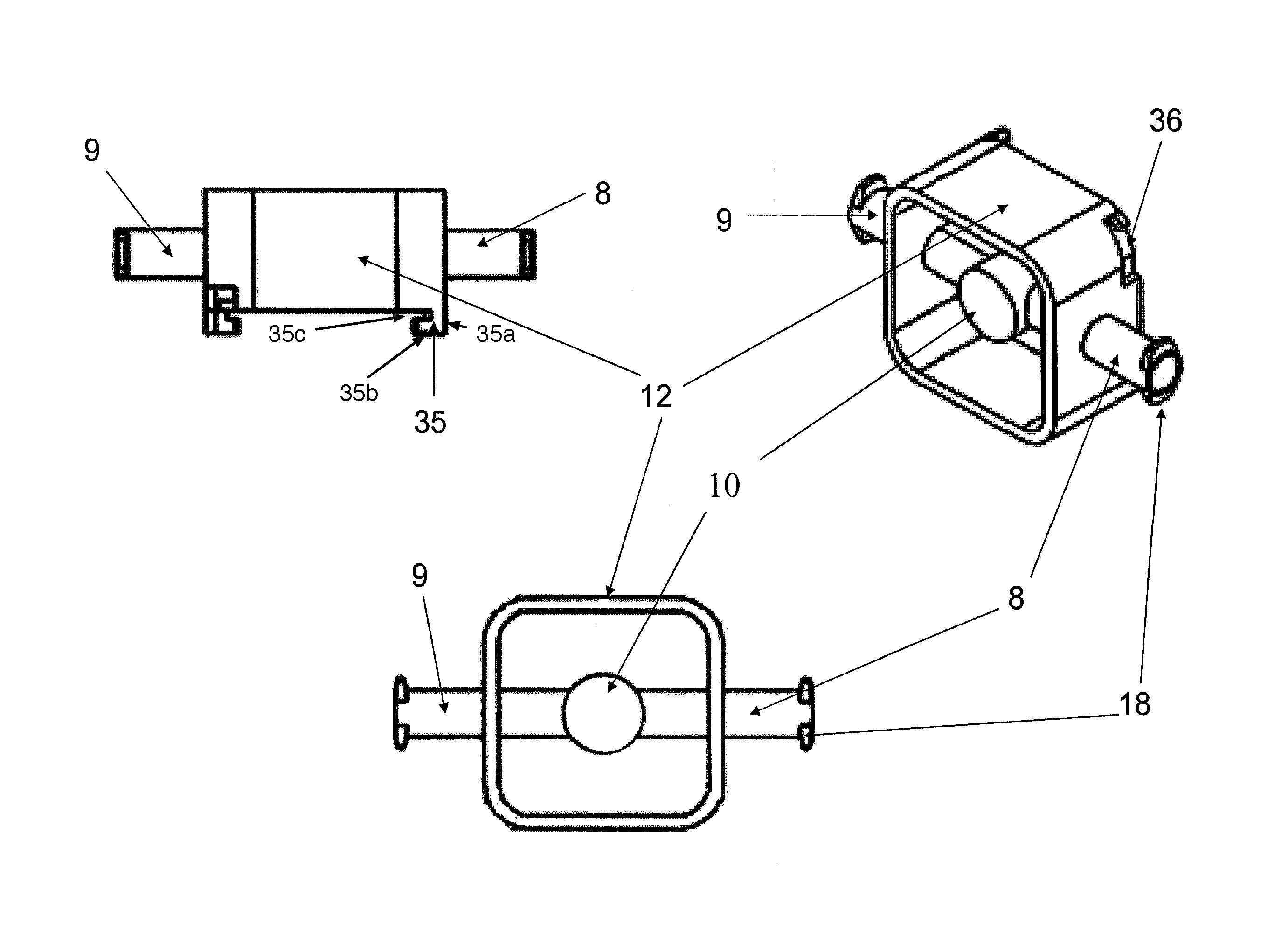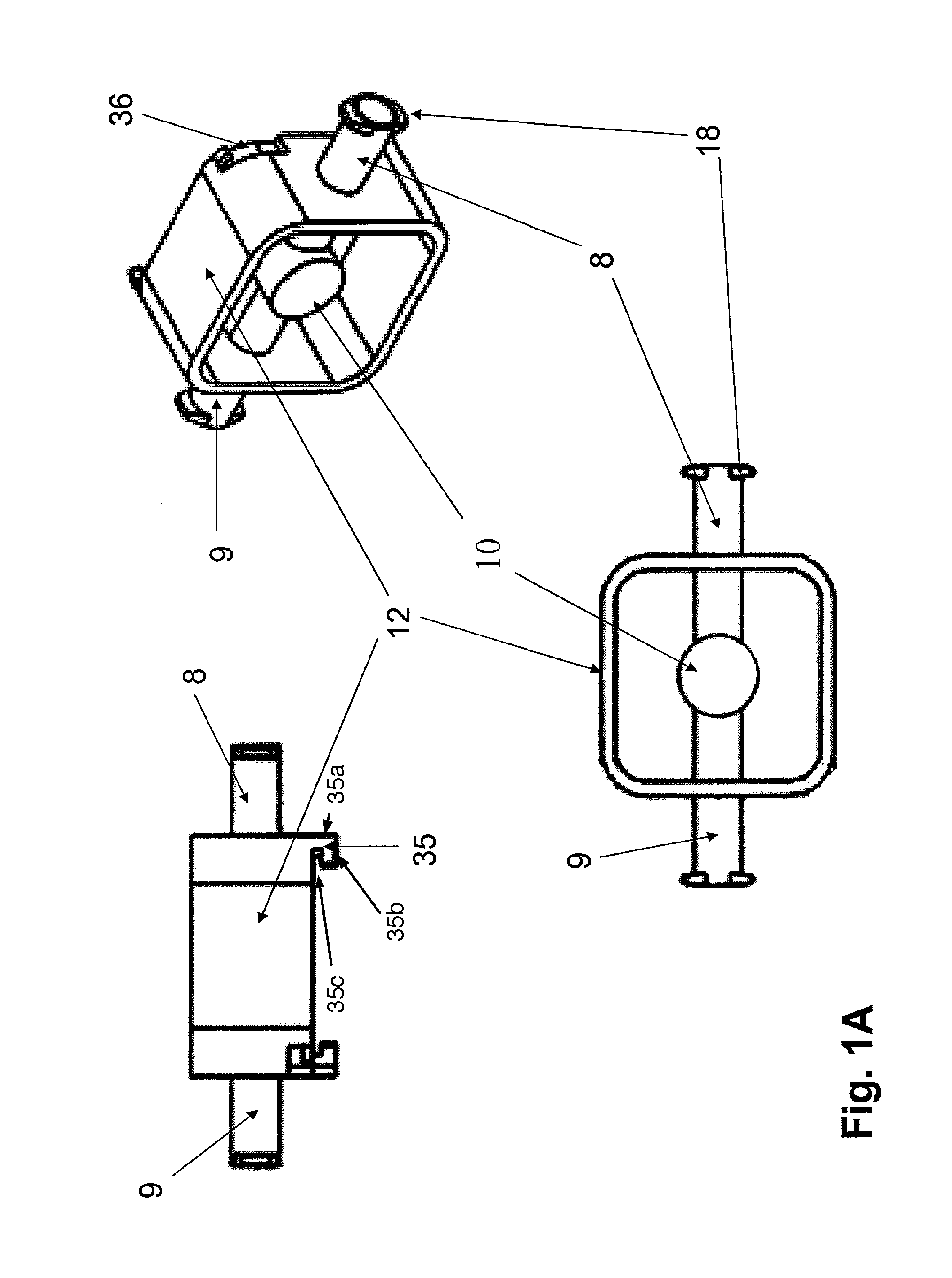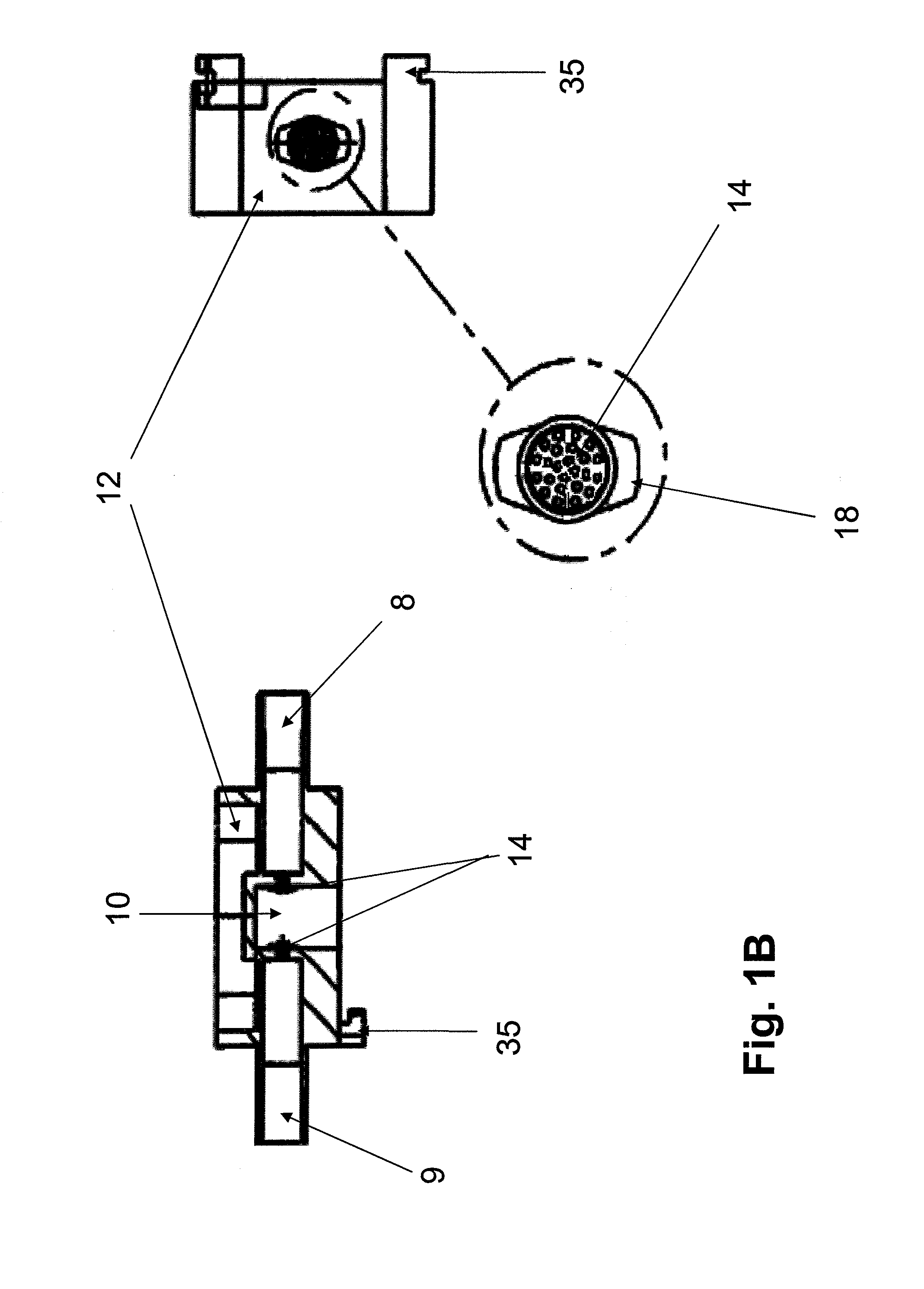Co-culture bioreactor system
a bioreactor and coculture technology, applied in the field of coculture bioreactor systems, can solve the problems of difficult in vitro culture of in vitro viable three-dimensional cellular constructs that mimic natural tissue, complicated in vivo system must be accurately modelled, and limit the means for better understanding biochemical communication, so as to prevent or minimize cell attachment
- Summary
- Abstract
- Description
- Claims
- Application Information
AI Technical Summary
Benefits of technology
Problems solved by technology
Method used
Image
Examples
example 1
[0103]Cell Culture: A 3T3 mouse fibroblast cell line (available from ATCC, Manassas, Va.) was used in three studies (numbered 1-3 below) to examine cell viability when subjected to perfusion fluid flow in a system. A fourth study (Study 4) used a D1 cell line (ATCC) of adult mouse bone marrow stromal cells and incorporated hydrostatic compression in addition to the perfusion flow. The D1 cell line was selected due to its demonstrated multi-potent potential including favorable osteogenic properties.
[0104]Anchorage Fabrication: Multiple discrete poly-L-Iactide (PLL) hollow beads with an average diameter of 0.8 mm served as the discrete tissue engineering scaffolds for all studies. Briefly, scaffold fabrication was completed using solvent emulsion techniques, beginning with an 8% (m / v) solution of Purasorb polylactide pellets (Cargill, Minneapolis, Minn.) and dichloromethane (Mallinckrodt Baker, Phillipsburg, N.J.). A quantity of 5 ml of PLL solution was dispensed, using a 20 cc glass ...
example 2
[0113]Dynamic bioreactor systems were utilized to examine the influence of multiple mechanical stimuli on the differentiation traits of adult mesenchymal stem cells in addition to a variety of other cell types. The bioreactor was designed to model the in vivo conditions through available system conditions including hydrostatic loading. Perfusion of medium through the system was also adjusted to provide physiological levels of fluid shear stress across the cells.
[0114]Bioreactor systems such as that illustrated in FIG. 5 were prepared. Each 0.2 mL volume culture chamber was loaded with 45 mg PolyGraft™ granular material. A silicone diaphragm / gasket and four clamping socket screws were used to provide leak-free assembly of the culture chamber adjacent a pressure module.
[0115]All systems utilized a D1 cell line grown in quantity using standard cell culture flasks (Corning). The initial cell culture medium consisted of DMEM (ATCC) supplemented with 10% FBS and 1% antibiotic / antimycotic....
example 3
[0127]The use of injection-molded culture chambers (FIG. 18) allows the researcher to load the desired 3D scaffold material (FIG. 18A) of interest into two opposing culture chambers. The culture chambers can accommodate a variety of scaffold configurations including discrete beads, continuous porous constructs (e.g., sponge-like), and hydrogels, all retained by an integrated screen (FIG. 18B) molded directly into the fluid ports.
[0128]Cells can be loaded in the scaffold material prior to plasticware assembly or seeded post-assembly via manual syringe perfusion through the culture chamber and scaffold. The placement of a solid gasket (FIG. 18C) between the opposing culture chambers allows for two independent samples (n=2) within each plasticware assembly. Each chamber receives an independent perfusion (FIG. 18D) of culture medium that can accommodate unique chemical or mechanical stimulus for multiple experimental treatments. Integrated inlet and outlet po...
PUM
| Property | Measurement | Unit |
|---|---|---|
| pore size | aaaaa | aaaaa |
| pore size | aaaaa | aaaaa |
| diameter | aaaaa | aaaaa |
Abstract
Description
Claims
Application Information
 Login to View More
Login to View More - R&D
- Intellectual Property
- Life Sciences
- Materials
- Tech Scout
- Unparalleled Data Quality
- Higher Quality Content
- 60% Fewer Hallucinations
Browse by: Latest US Patents, China's latest patents, Technical Efficacy Thesaurus, Application Domain, Technology Topic, Popular Technical Reports.
© 2025 PatSnap. All rights reserved.Legal|Privacy policy|Modern Slavery Act Transparency Statement|Sitemap|About US| Contact US: help@patsnap.com



